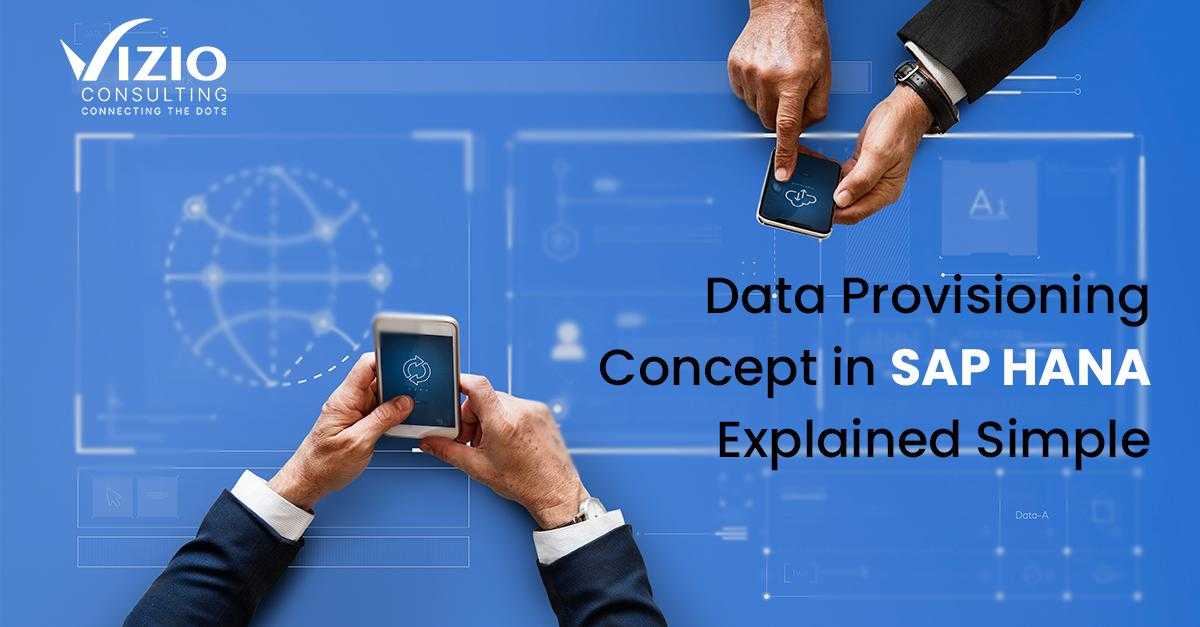The internet is loaded with blogs explaining the Data Provisioning techniques for SAP HANA as this technology has been in the market for many years. However, In this blog, we would like to contribute a little more by simplifying the Data Provisioning concept from a layman’s point of view so that even a beginner can understand the basic logic. Data Provisioning, in simple terms, means bringing data or accessing the data from the source system to the target system without the interference of the data warehouse. Data Provisioning dealt with the replication of data into the HANA database to be used in HANA Modeling and consumed using Reporting tools. Various data provisioning methods are supported in SAP HANA system data replication. So the technique we are using to fetch the desired data from the source to our target system is called Data Provisioning. There are four types of Data Provisioning Techniques in terms of the HANA point of view, which are as below:
- Real-time Provisioning
- Near Real Time provisioning
- Data Federation
- Local Data Import
Let’s see each provisioning Technique in detail:
- Real-Time provisioning: This includes two tools. SLT (System Landscape Transformation and Replication Server) and Sybase Replication Server. These two tools are used for fetching real-time data/latest data from the source and paste in the target system with a latency of fewer than 5 seconds. Sources supported are SAP ECC, and SAP Standard supported Vendors (like Oracle. IBM etc.)
- Near Real-Time Data Provisioning: Tools like BODS (Business Objects Data Services) and Informatica. BODS is an ETL tool that allows you to work on the metadata or data before pushing it to the HANA Target. It supports Structured and unstructured Data (Like HADOOP), and you can fine-tune the data as per your requirement before sending it to the target system.
- Data Federation: It’s like Smart Data Access. In this case, we do not bring the data into the target system; we keep it where it is; we just bring the metadata and create the virtual data tables in the target systems. Then you can build a model on top of them, send them to the application layer, etc. This is achieved by installing drivers into the HANA box and communicating with source systems like Oracle, Hadoop, MS-SQL Server, SAP HANA system, Teradata etc.
- Local Data Import: Since many business users use CSV and Flat files as a source, internally, HANA has a local import that allows you to bring CSV and Flat file data into the system.
Also, SAP DXC is explicitly designed to interact with the SAP ERP system. For example, SAP DXC uses SAP ERP Extractor to bring data directly to the SAP HANA system. This is a simple overview of the Data Provisioning Techniques in SAP HANA.
Replication in SAP HANA
System replication can be set up on the console via command line or by using HANA studio. The primary ECC or transaction systems can stay online during this process. SAP HANA Replication allows data migration from source systems to the SAP HANA database. Using various data replication techniques, a simple way to move data from the existing SAP system to HANA. Data needs to be loaded to SAP HANA before data reaches the user via a front-end tool. All these processes are referred to as
ETL (Extract, Transform, and Load), and the detail is as below-
- Extract – This is ETL’s first and sometimes most challenging part, in which data are extracted from the different source systems.
- Transform – In the Transformation Part, a series of rules or functions are defined for the data extracted from the source system for loading data into the target system.
- Load – The load phase loads the data in the target system.
SAP HANA supports two types of Provisioning tools –
- SAP HANA Built-In Provisioning Tool
-
- Flat File
-
- Smart Data Streaming
-
- Smart Data Access (SDA)
-
- Enterprise Information Management(EIM)
-
- Remote data
- External tool supported by SAP HANA
-
- SAP Landscape Transformation
-
- SAP Business Objects Data Services
-
- SAP Direct Extractor Connection
-
- Sybase Replication Server
Methods of Data Provisioning
At present, there are for main methods of data provisioning for SAP HANA; these are – SLT The SAP Landscape Transformation Replication Server (SLT) runs on the SAP Net Weaver Platform. In addition to SAP and non-SAP source systems, SLT is ideal for Real-Time and Scheduled replication. SAP DATA Services SAP DATA Services is a platform for designing ETL processes with a graphical user interface. DXC DXC stands for Direct Extractor Connect and is a batch-driven ETL tool. Flat File Upload This option used to Upload data (.csv, .xls, .xlsx) to SAP HANA. Before we conclude, it is equally important to know how you can leverage the technological framework that Operational Data Provisioning offers to support two different application scenarios. Operational analytics for decision-making in operational business processes is the first of them. So, what’s the efficacy of operational Analytics? OLAP analysis of the application data can be done natively in the application system using Operational Analytics. You don’t need to set up a data warehouse for operational analytics; you need to make a few minor configuration changes to the BW in your application system. Data replication to a BW system is not required. It is possible to retrieve the application data directly. Using SAP HANA or SAP NetWeaver BW Accelerator helps enhance analytical performance. Our experts provide personalized demos after understanding the business needs. Click here to talk to our experts.

